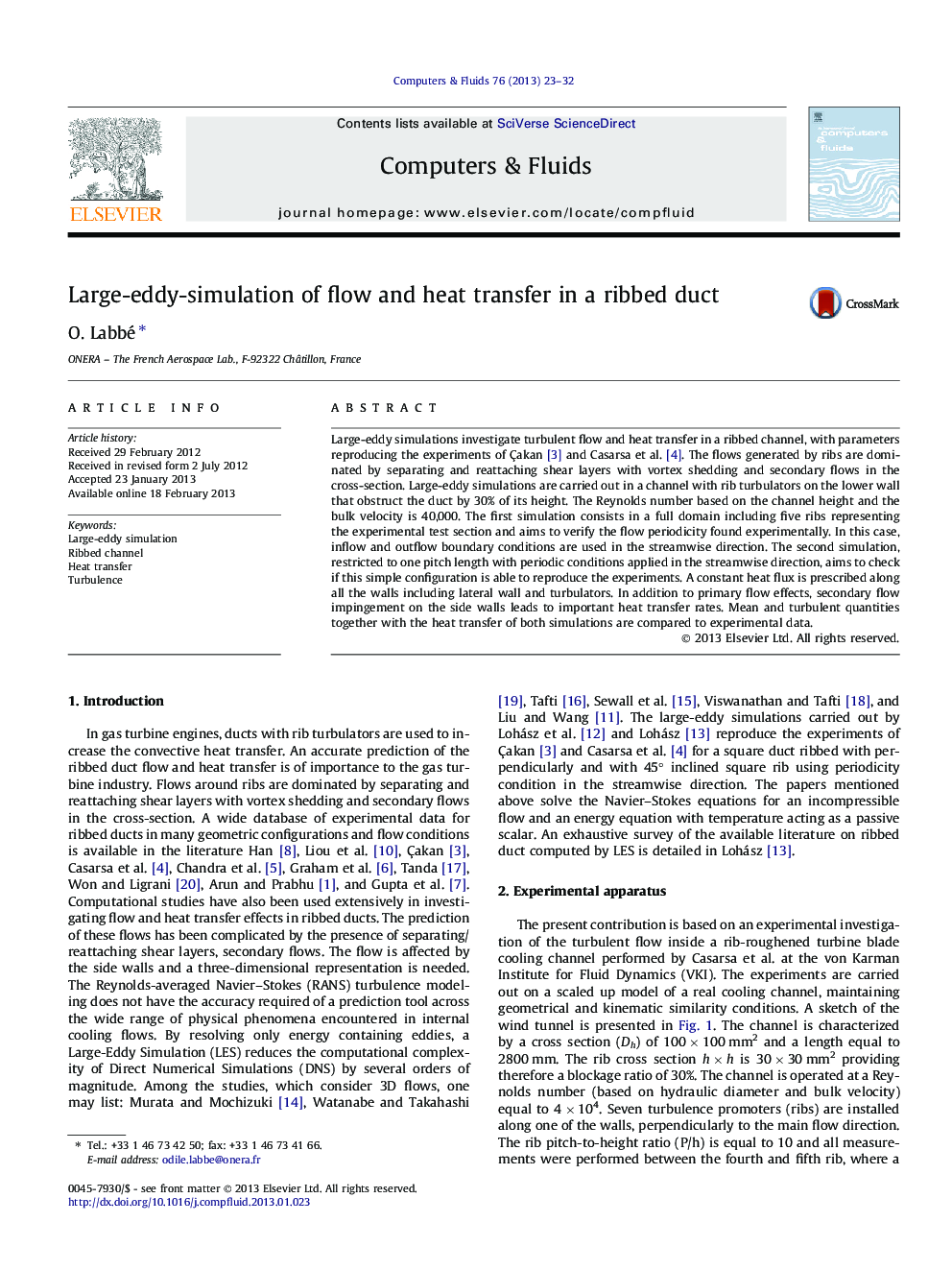| Article ID | Journal | Published Year | Pages | File Type |
|---|---|---|---|---|
| 762166 | Computers & Fluids | 2013 | 10 Pages |
Large-eddy simulations investigate turbulent flow and heat transfer in a ribbed channel, with parameters reproducing the experiments of Çakan [3] and Casarsa et al. [4]. The flows generated by ribs are dominated by separating and reattaching shear layers with vortex shedding and secondary flows in the cross-section. Large-eddy simulations are carried out in a channel with rib turbulators on the lower wall that obstruct the duct by 30% of its height. The Reynolds number based on the channel height and the bulk velocity is 40,000. The first simulation consists in a full domain including five ribs representing the experimental test section and aims to verify the flow periodicity found experimentally. In this case, inflow and outflow boundary conditions are used in the streamwise direction. The second simulation, restricted to one pitch length with periodic conditions applied in the streamwise direction, aims to check if this simple configuration is able to reproduce the experiments. A constant heat flux is prescribed along all the walls including lateral wall and turbulators. In addition to primary flow effects, secondary flow impingement on the side walls leads to important heat transfer rates. Mean and turbulent quantities together with the heat transfer of both simulations are compared to experimental data.
► Large-eddy simulations carried out in a ribbed channel with a blockage ratio of 30%. ► The simulations reproduce the major flow structures measured experimentally with a very good agreement. ► The secondary cross-sectional flows have a large impact on the heat transfer augmentation on the side walls.
